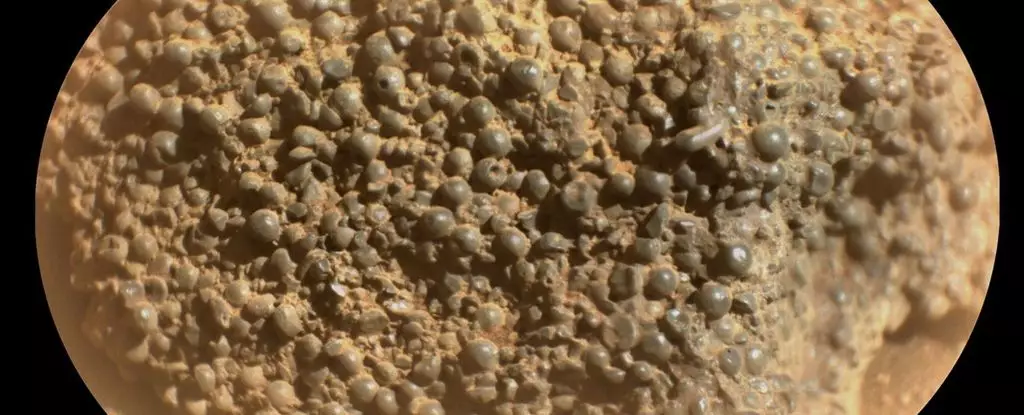The enigmatic and often perplexing surface of Mars never ceases to astonish those intrigued by planetary science. Recently, the Perseverance rover, our robotic scout on the red planet, encountered a rock formation that has left scientists scratching their heads. Dubbed St. Pauls Bay, this unusual formation is composed of numerous tiny dark gray spheres that coalesce in a way reminiscent of frogspawn. The “shocking” discovery not only adds to Mars’ geological intrigue but also raises vital questions about its formation processes and history.
A Unique Geological Structure
St. Pauls Bay stands out starkly against its Martian surroundings. Unlike other known Martian rocks, this peculiar formation contains clusters of small, nearly spherical bodies, each roughly one millimeter in diameter. On Earth, formations like these could typically be classified as botryoidal—composed of minerals that exhibit rounded, bulbous shapes and are commonly found in various geological environments due to well-understood processes. However, the Martian conditions that led to the creation of St. Pauls Bay are anything but ordinary and warrant further exploration. While terrestrial botryoidal formations, such as grape agate, have established origins, the genesis of these spheres on Mars remains elusive.
Potential Formation Processes
Several theories could explain the formation of St. Pauls Bay. Earthly parallels suggest that one possibility could be aqueous processes, as seen in formations like hematite-rich “blueberries” or the bubbly “popcorn” rocks within the Jezero crater, all of which imply past water presence. Alternatively, these spherical structures might stem from rapid cooling of molten rock during events such as meteorite impacts or volcanic activity. Such collisions create immense heat that can melt materials into globules that later cool and harden into various forms. Still, the absence of a clear geological context due to St. Pauls Bay being a “float rock”—a fragment dislodged from its original bedrock—complicates any attempts at understanding its formation.
Scientific Dilemmas and Future Exploration
To advance our understanding of St. Pauls Bay, contextual information regarding its origin is crucial. With scientists currently unable to determine whether water or fire played a role in its creation, the mission ahead for Perseverance is clear: to move closer and begin detailed analysis of its surroundings. Interestingly, satellite observations have identified a dark layer of rock in proximity to St. Pauls Bay that may serve as the original source of these peculiar formations. By accurately pinpointing the geological relationships at play, scientists hope to shed light on not just this singular rock but on the broader implications regarding the Martian environment and its history.
The riddles posed by St. Pauls Bay may be a small fragment of Mars’ geological narrative, yet they represent a significant opportunity for scientific inquiry. Each rock like this transcends mere curiosity; it serves as a testament to humanity’s relentless pursuit of knowledge about extraterrestrial worlds and the potential for understanding more about our own planet’s past. In the quest to decode the mysteries of Mars, formations like St. Pauls Bay remind us that even the seemingly simplest structures can harbor complex histories and secrets lying just beneath their surface.

